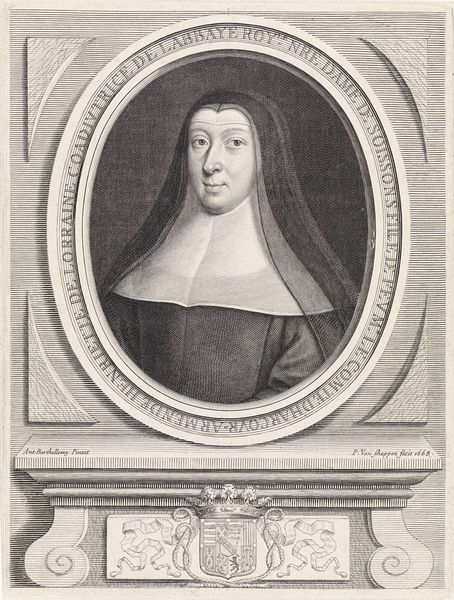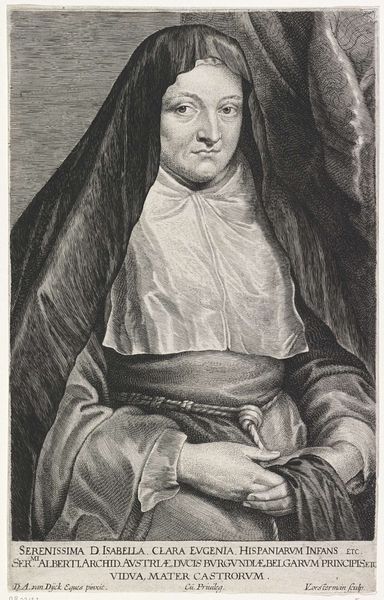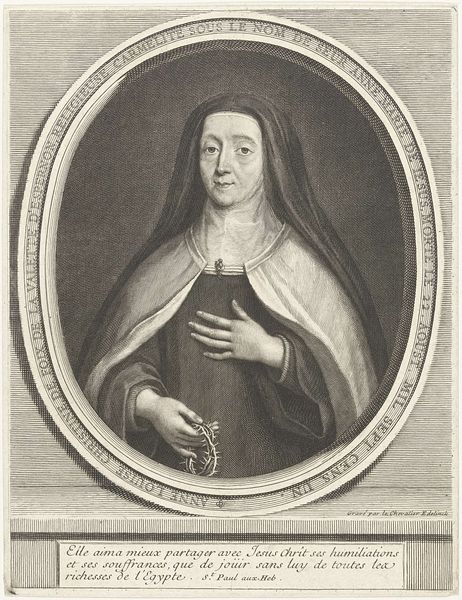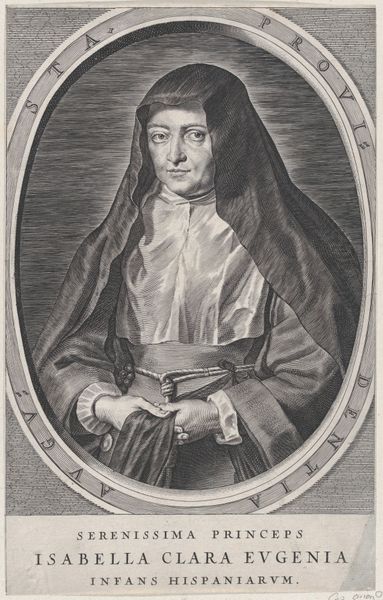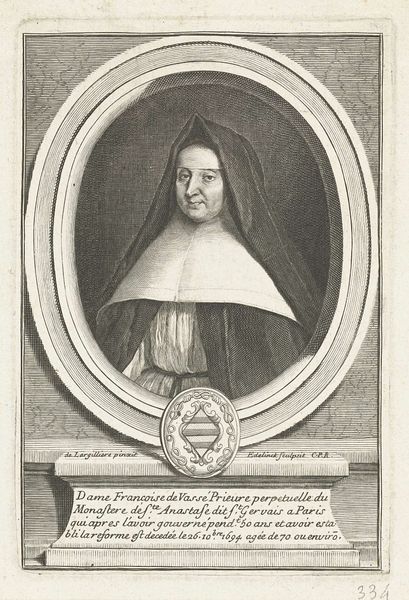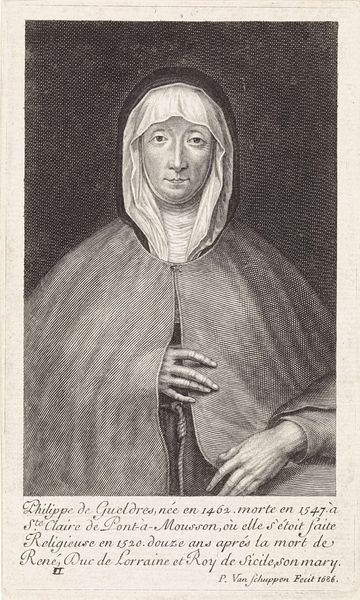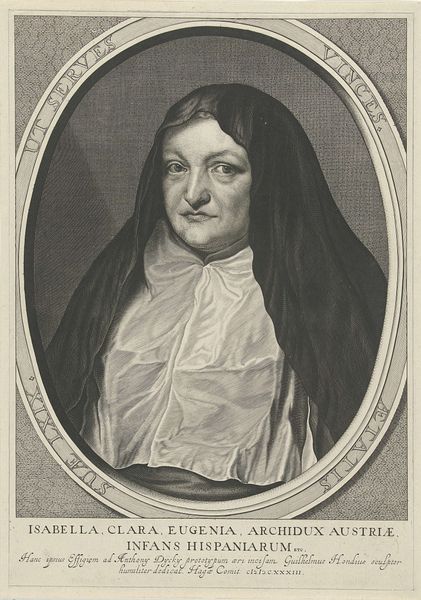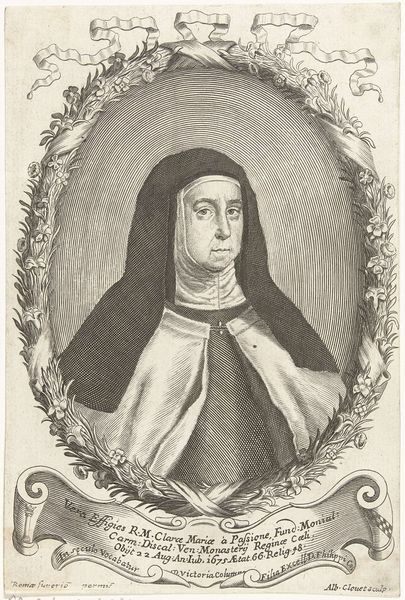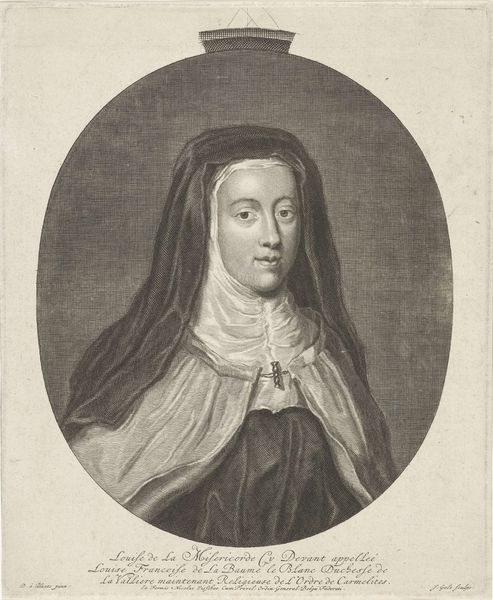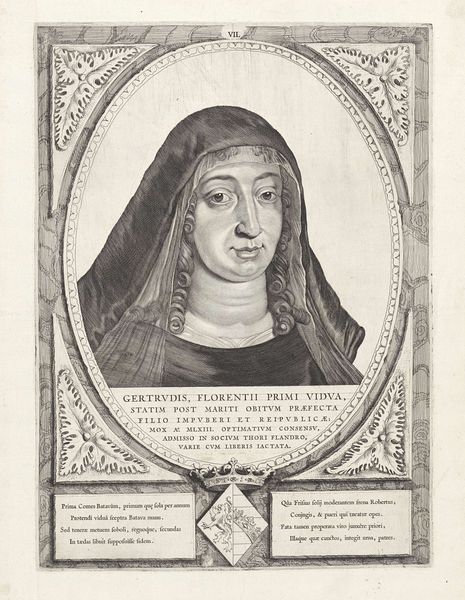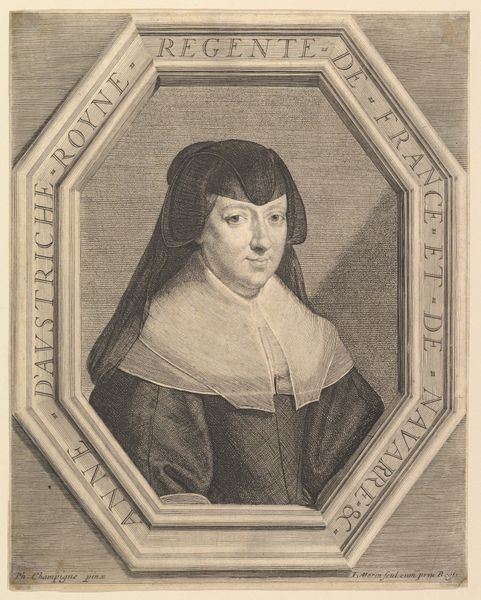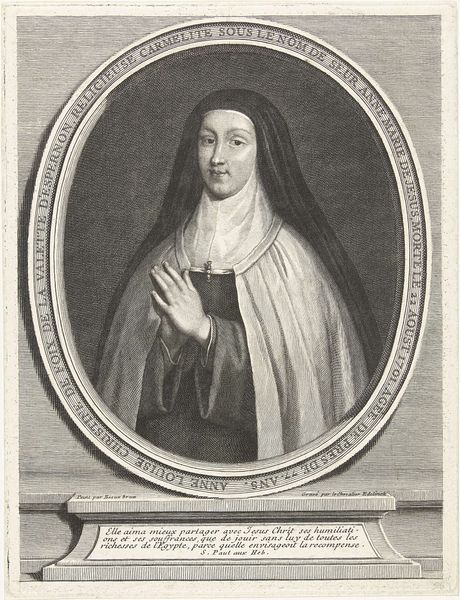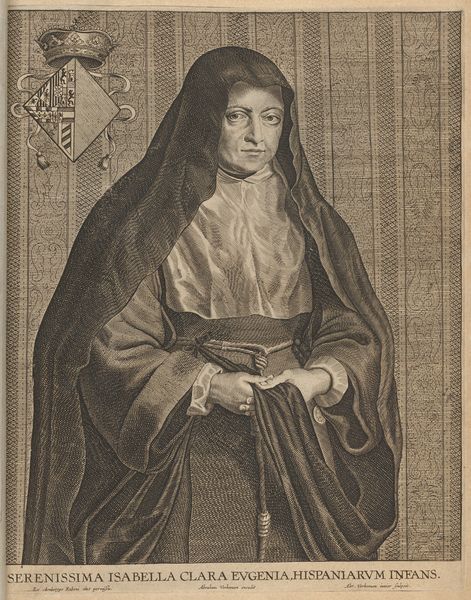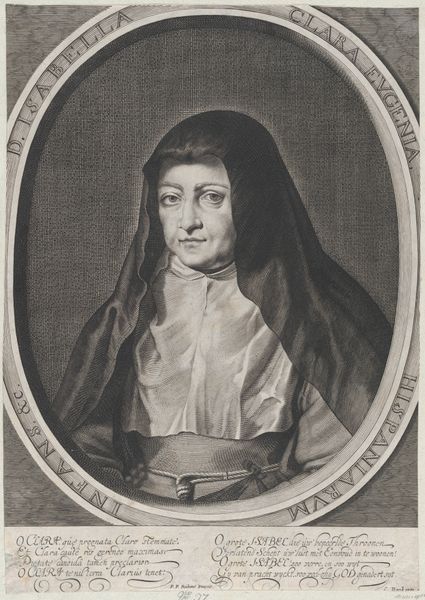
Portret van Isabella Clara Eugenia, infante van Spanje 1658 - 1677
0:00
0:00
print, etching, engraving
#
portrait
#
baroque
# print
#
etching
#
engraving
Dimensions: height 229 mm, width 187 mm
Copyright: Rijks Museum: Open Domain
Curator: Isabella Clara Eugenia, Infanta of Spain, captured in an etching and engraving crafted sometime between 1658 and 1677 by Wallerant Vaillant. It's a baroque portrait piece residing here at the Rijksmuseum. Editor: Stark! The starkness almost makes it feel modern, you know? The heavy shadows contrast with her face, drawing you right in. What kind of labour was involved in something like this? Curator: Well, think of Vaillant hunched over the plate, meticulously incising the image. He’d use a burin for the engraving, pushing through the copper, and acid for the etching, allowing for finer, more delicate lines. Layer upon layer to achieve those depths. It would require so much patience and precision; time meant value and quality. Editor: Absolutely, it's all about the hours etched – no pun intended – into the creation. Speaking of precision, the dress almost disappears, blending in with the dark background. Everything is directed at the subject’s face, making it impossible to look away. There is something captivating about the subject’s direct, strong gaze. Curator: There’s a sense of power tempered by serenity, don't you think? This piece evokes for me a stillness, a moment of quiet contemplation almost in defiance of all the Baroque excess that would be reigning at the time it was made. Vaillant truly has brought Isabella's humanity to the surface, showing how people, even of high birth, contain within them layers of character. Editor: The whole image also evokes the austerity that was prevalent through the materials of the printmaking itself. Given the scale and production, this engraving could've made Isabella available to a much wider audience than a painted portrait. What power lies in multiplying the image like this. It’s quite interesting when you look at printmaking from the lens of accessibility of representation, which now is democratized on social media and cameras on every cellular device. Curator: Yes, these are potent considerations of access and privilege in the sphere of art. This look back offers us an important context in considering where we are going in contemporary practice. Editor: And hopefully inspires us to appreciate what an amazing labour of love it must've been to realize something like this back then. Curator: Exactly! It has certainly reminded me again that every artwork has a history etched into its surface, doesn't it?
Comments
No comments
Be the first to comment and join the conversation on the ultimate creative platform.
